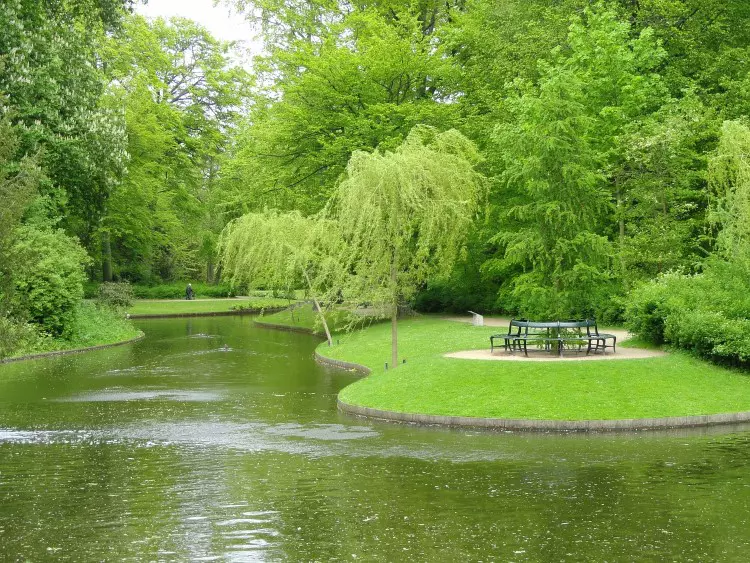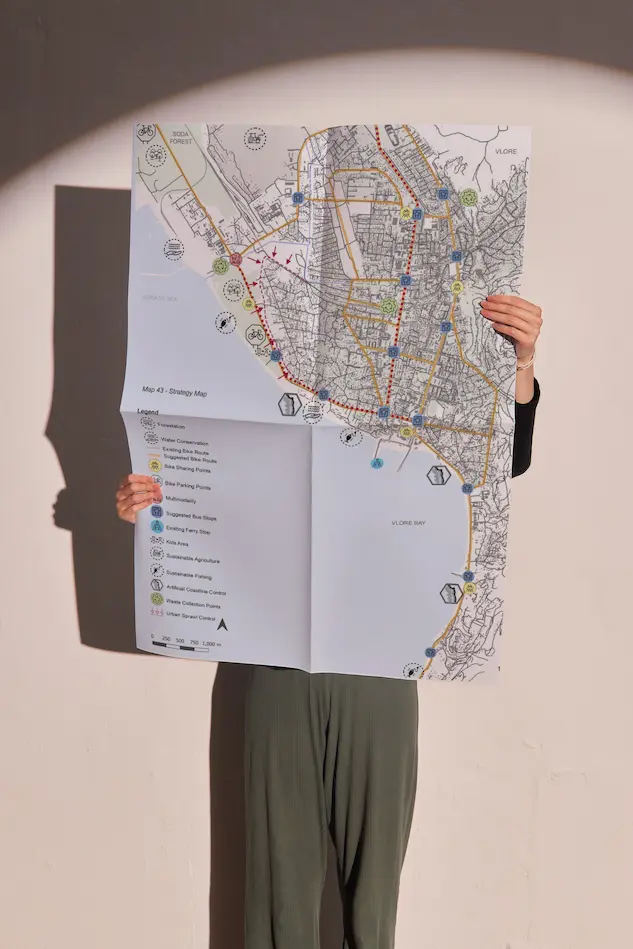As urbanization continues to surge globally, cities face a growing challenge in managing stormwater, especially in light of climate change, which increases the frequency and intensity of rainfall and flooding. We saw several clear examples of this in 2024. Germany and other Central European countries, such as Austria and Switzerland, were hit by severe floods in the summer of 2024, following weeks of heavy storms. Several Spanish cities, such as Valencia, Madrid, and Barcelona, experienced more intense and frequent flooding due to a combination of extreme weather events and urbanization that is not always adapted to these challenges. In the United States, flooding in 2024 was particularly damaging in the Southeast and Midwest, with several major cities and rural areas experiencing severe floods caused by extreme rainfall and storms. China also faced significant flooding, particularly in central and southern regions, exacerbated by record rainfall and the overflow of major rivers like the Yangtze and Yellow Rivers. Flooding was also reported in India, Bangladesh, and other countries.

Traditional drainage systems, designed to funnel water quickly into rivers or sewers, often fail to cope with heavy downpours, leading to flooding, water pollution, and the loss of valuable water resources. In response to these challenges, the concept of a “sponge city” has emerged as an innovative solution.
What is a sponge city?
A sponge city is an urban design strategy that aims to absorb, store, and reuse rainwater through a combination of natural and engineered solutions. The goal is to manage stormwater in a way that mimics the natural water cycle, allowing cities to “sponge” up rainwater, store it in green infrastructure, and release it slowly back into the environment or reuse it for other purposes.
This approach relies on the integration of permeable surfaces, green roofs, wetlands, rain gardens, porous pavements, and other nature-based solutions that absorb and manage water. Sponge cities emphasize resilience, sustainability, and the reduction of the urban heat island effect while enhancing the overall quality of life for urban dwellers.
We can identify some key features of a sponge city:
- Green infrastructure. This includes features such as parks, green roofs, urban forests, and vegetated swales that capture and absorb rainwater.
- Permeable surfaces. Traditional concrete or asphalt surfaces are replaced with permeable materials that allow water to filter through the ground rather than running off. These materials can be used for roads, walkways, parking lots, and other surfaces where water accumulation can be problematic.
- Rainwater harvesting systems. The installation of rainwater collection systems allows cities to capture rainfall for non-potable uses like irrigation, cleaning, or even flushing toilets.
- Retention and detention systems. Sponge cities incorporate ponds, wetlands, and underground storage tanks to temporarily hold excess rainwater. These systems prevent flooding by controlling the rate at which water is released into drains or rivers, thus minimizing the risk of overflow.
- Ecological restoration. Revitalizing rivers, streams, and other water bodies within urban environments is a key part of the sponge city model. These areas are often restored to function as natural water management systems.

The creation of sponge cities offers numerous benefits. By absorbing and gradually releasing rainwater, sponge cities reduce the likelihood of flash floods and overwhelming drainage systems, which are common in many rapidly urbanizing areas. Capturing and reusing rainwater through systems like rain gardens and storage tanks helps reduce the demand for freshwater resources, promoting more sustainable water use in urban environments. The incorporation of green infrastructure not only aids water management but also improves urban ecosystems, creating healthier habitats for plants and animals while offering residents access to nature and recreational spaces. Green spaces help absorb pollutants from the air, reduce urban heat island effects, and provide shade, making cities cooler in hot weather. This significantly improves the livability of densely populated areas, especially in regions that experience extreme temperatures. Sponge cities can help reduce the costs associated with flooding, water treatment, and energy consumption for cooling. They can also create opportunities for local businesses involved in the design, installation, and maintenance of green infrastructure.
Global examples of sponge cities
There are several interesting examples of sponge cities being developed around the globe. Here are some of them:
One of the most prominent examples of a sponge city initiative is in China, where the concept has been rapidly implemented in cities like Xiamen and Shanghai. The Chinese government has made sponge city development a key part of its urban planning strategy, with numerous pilot projects launched across the country.
Xiamen, a coastal city in southeastern China, was selected as one of the first cities to implement this ambitious strategy. The city’s adoption of sponge city principles has not only improved flood control but also transformed urban spaces into vibrant green areas. To reduce surface runoff, the city has replaced traditional concrete and asphalt with permeable materials that allow water to infiltrate the ground. These materials are used in roads, parks, and pedestrian walkways. Xiamen has integrated a network of rain gardens and wetlands throughout the city, helping absorb stormwater and improve water quality, reducing the burden on the city’s drainage system. Green roofs are becoming more common in Xiamen, where they help absorb rainwater, reduce the urban heat island effect, and enhance the city’s aesthetics. Local authorities also promote tree planting and vegetation restoration along riverbanks to enhance the natural landscape. As a result, Xiamen has experienced a noticeable reduction in urban flooding, even during heavy rains. The creation of green spaces has not only improved water management but has also enhanced residents’ access to nature, making the city more livable.

Singapore, known for its innovative urban planning, faces significant challenges due to limited natural water resources and vulnerability to climate change. To ensure long-term water sustainability, Singapore has adopted a series of innovative water management practices, including elements of the sponge city approach. The city uses an integrated system of drainage channels, underground storage tanks, and constructed wetlands to capture and store rainwater. The city encourages the use of rainwater harvesting systems in both public and private buildings, reducing dependence on external water supplies. A special program transforms Singapore’s waterways into attractive public spaces that also function as stormwater management systems. By designing waterfronts with natural filtration systems, rain gardens, and ponds, the program reduces flood risks while enhancing public access to green spaces. Singapore has long promoted the development of green roofs and vertical gardens. The city-state is also home to the famous Gardens by the Bay, a futuristic park that incorporates water management features such as sustainable irrigation and stormwater filtration. As a result, Singapore has successfully reduced its reliance on imported water through innovative technologies such as NEWater (treated wastewater) and desalination. Sponge city strategies have played a crucial role in capturing and reusing rainwater for non-potable purposes. The integration of water features with public spaces has made Singapore one of the greenest and most livable cities in the world, offering residents and visitors alike the chance to experience nature within an urban environment.
Rotterdam is known for its cutting-edge architecture and commitment to sustainability. Situated in a low-lying area, the city is particularly vulnerable to flooding and rising sea levels. To tackle these issues, Rotterdam has invested heavily in climate-resilient infrastructure, including green solutions that mimic the functions of a natural sponge. One of Rotterdam’s most innovative solutions is the creation of “water squares,” which are public spaces that double as stormwater reservoirs. During heavy rainfall, these squares temporarily store excess water before it is slowly released into the city’s drainage system. The city also encourages the installation of green roofs and rainwater harvesting systems on buildings, which help reduce runoff and provide alternative water sources for irrigation and other non-potable uses. Rotterdam is implementing floating homes and floating parks, as well as “sponge” pavements that can absorb rainwater. This flexible infrastructure helps the city adapt to changing water levels and reduces the risk of flooding. Rotterdam has made sustainability a central aspect of its public engagement efforts, with citizens actively involved in the creation and maintenance of water management features like green roofs, rain gardens, and floating parks made from recycled plastic. As a result, Rotterdam’s focus on water management and climate adaptation has made it a model for other coastal cities at risk of rising sea levels.

Copenhagen has developed a comprehensive strategy for managing stormwater that integrates both green and blue infrastructure solutions. The city’s Cloudburst Management Plan, based on the Copenhagen Climate Adaptation Plan approved in 2011, is designed to handle intense rainfall events, often referred to as “cloudbursts,” that overwhelm the city’s drainage system. The plan includes a network of urban parks, ponds, and lakes that temporarily store stormwater during heavy rains before it is gradually released. Copenhagen has introduced permeable pavements, which allow rainwater to seep into the ground instead of running off into storm drains. Green roofs are also increasingly being installed on buildings throughout the city, providing additional spaces to manage rainwater and promote biodiversity. Similar to Rotterdam, Copenhagen has developed “water squares” that act as both public spaces and temporary water storage areas during heavy rain. These squares fill with water during a downpour and release it slowly once the rain subsides. Many of these spaces double as recreational areas, with features like play zones, sports facilities, and community gardens. Copenhagen has introduced creative solutions such as blue-green streets, where water management features (such as canals and rain gardens) are integrated with pedestrian walkways and cycle paths. This integration encourages sustainable stormwater management while improving mobility and public access to green spaces.

Challenges and future outlook
While the concept of sponge cities offers significant promise, there are several challenges to consider. The initial cost of implementing green infrastructure can be high, and urban space is often limited in dense metropolitan areas. There is also the need for proper maintenance and management of the systems to ensure their long-term effectiveness. Additionally, public awareness and participation are crucial to the success of these projects, as residents and communities need to be involved in the upkeep and use of green spaces.
Despite these challenges, the future of sponge cities looks promising, especially as urban planners and governments recognize the need for more resilient and sustainable cities. As climate change continues to exacerbate water-related issues, the adoption of sponge city principles could provide a model for cities around the world to adapt to a changing environment while improving the quality of life for urban residents. In conclusion, sponge cities represent a transformative approach to urban water management. By incorporating nature-based solutions and innovative technologies, these cities are not only addressing immediate environmental challenges but also contributing to the creation of sustainable, livable urban spaces for future generations.


